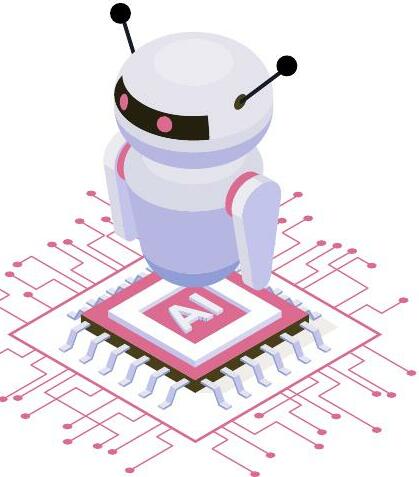
Generative AI is very exciting technology. It's like having a robot apprentice who can learn how to make art, music, and more! However, it still takes a lot of data, computing power, and learning for AI to match the creative abilities of people. But generative AI is getting better every day as it studies more examples of human creativity. The most amazing thing is that AI is not just copying work made by humans. It is able to take what it has learned and come up with new patterns, combinations, and innovations. Generative AI will help make art and content that has never been seen before!
Open-source generative AI
The code used to create open-source generative AI is available for everyone to look at, change, and use to build new things. It is not kept a secret by one company. Open source is about sharing and working together. Some examples of open-source generative AI projects are:
■ RunwayML: This helps people create new drawings, sounds, and videos with AI. You can change the code to customise the AI art!
■ StyleGAN: This AI makes realistic fake human faces. The code is public so new things can be generated.
■ Magenta: A tool from Google to make music with AI. You can build on it to train the AI in new ways.
■ TensorFlow: This popular programming library lets anyone build all kinds of AI models. Generative Als are created with it.
Some other cool open-source projects are GAN Lab, Mimetic, Lexica, and VQGAN. The code for all these is free to use and change! The benefit of open source is that anyone can learn from these projects, make them better, and create new innovations. You may be asking yourself, "Why should I choose open-source generative AI over closed-source?" The key advantage of open-source generative AI is the collaborative and transparent nature of its development.
Esta historia es de la edición March 2024 de Open Source For You.
Comience su prueba gratuita de Magzter GOLD de 7 días para acceder a miles de historias premium seleccionadas y a más de 9,000 revistas y periódicos.
Ya eres suscriptor ? Conectar
Esta historia es de la edición March 2024 de Open Source For You.
Comience su prueba gratuita de Magzter GOLD de 7 días para acceder a miles de historias premium seleccionadas y a más de 9,000 revistas y periódicos.
Ya eres suscriptor? Conectar

Linux Foundation launches LF India to foster open source innovation and support in India
The Linux Foundation, a nonprofit organisation dedicated to driving innovation through open source, has announced the launch of LF India.

Red Hat launches Ansible Automation Platform Service on AWS
Red Hat, Inc., has announced the general availability of the Red Hat Ansible Automation Platform Service on Amazon Web Services (AWS) as a managed offering available through AWS Marketplace.

Fedora Asahi Remix 41 is now generally available
The Fedora and Asahi Linux projects have announced the general availability of Fedora Asahi Remix 41, the latest version of this distribution tailored for Apple Silicon Macs.

SageMath: A Second Glance at Cybersecurity
The eighth article in the series on SageMath explores a classical encryption scheme called the Rail Fence cipher and introduces the concept of symmetric-key encryption.

Building Cross-Platform Mobile Apps with lonic
Mobile apps are an intrinsic part of daily life today we use them to order food, groceries, taxis, and more. As these apps need to work across platforms, developers are focusing on cross-platform app development so that they code only once to create apps that function on multiple platforms. lonic is a framework that can help developers build apps faster than with native app development, while saving them time and money. Let’s learn how to install and deploy it.

Open Source AI Frameworks: Integrating AI with lot
Open source Al helps loT devices learn, adapt, and automate actions based on real-time data, improving convenience and security. Here’s an overview of six key open source Al frameworks that help integrate Al with loT, and the challenges they face.

Open Source loT: A Primer for Everyone
Open source IoT platforms promise to play a central role in shaping the future, making it possible for more people and businesses to benefit from smarter, more efficient solutions. We look at a brief history of this tech and explore emerging trends.

Using Open Source and Blockchain to Build Decentralised loT Networks
Explore how blockchain is being integrated with loT to create decentralised networks. Find out how leading open source projects like IOTA and Streamr use blockchain to ensure data integrity, security, and privacy in loT ecosystems.

Internet of Things: Running Language Models on Edge Devices
Let’s delve into the technical aspects, challenges, and benefits of deploying language models on edge/loT devices.

How Open Source is Making Quantum Computing Accessible to Everyone
Open source initiatives are breaking down the barriers to quantum computing, making it accessible to everyone. Explore what quantum computing is, the challenges of traditional adoption, how open source platforms are democratising the technology, and how you can get started in this exciting domain.